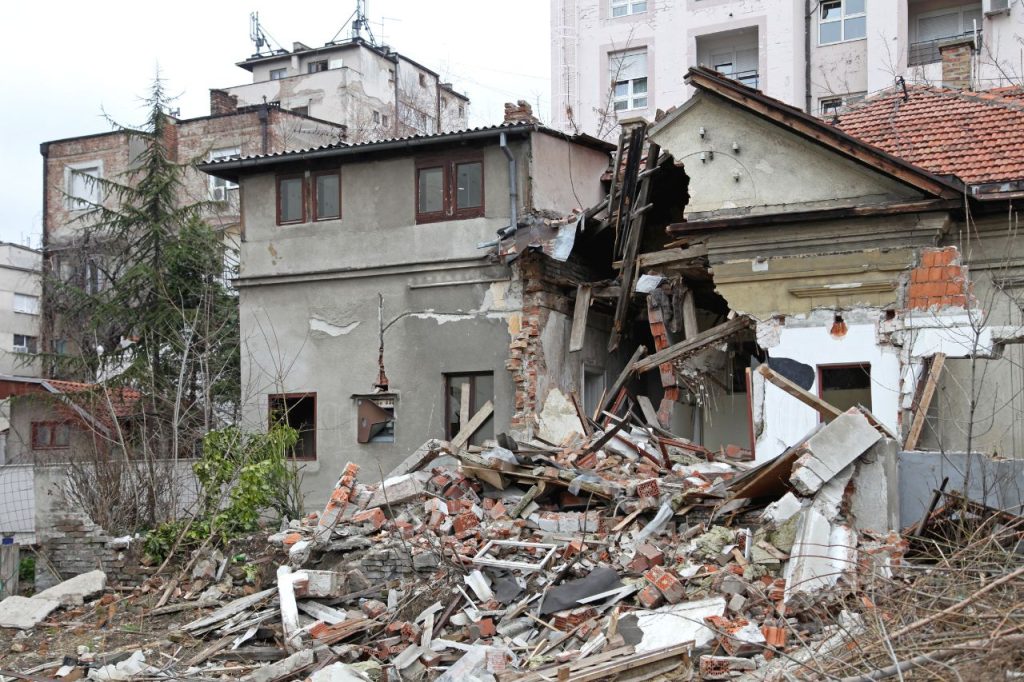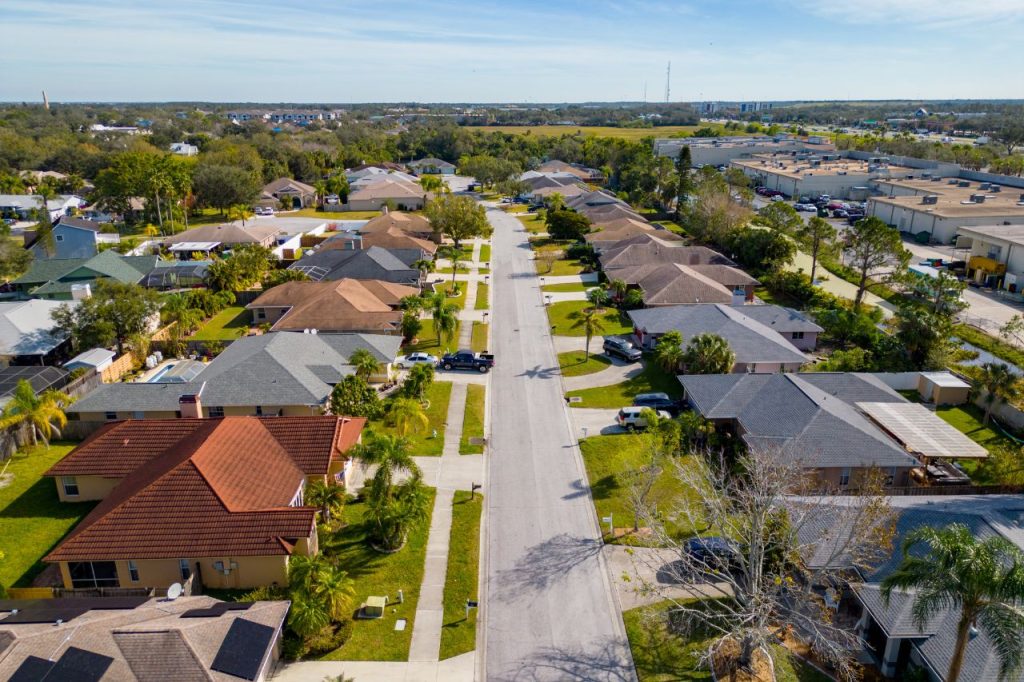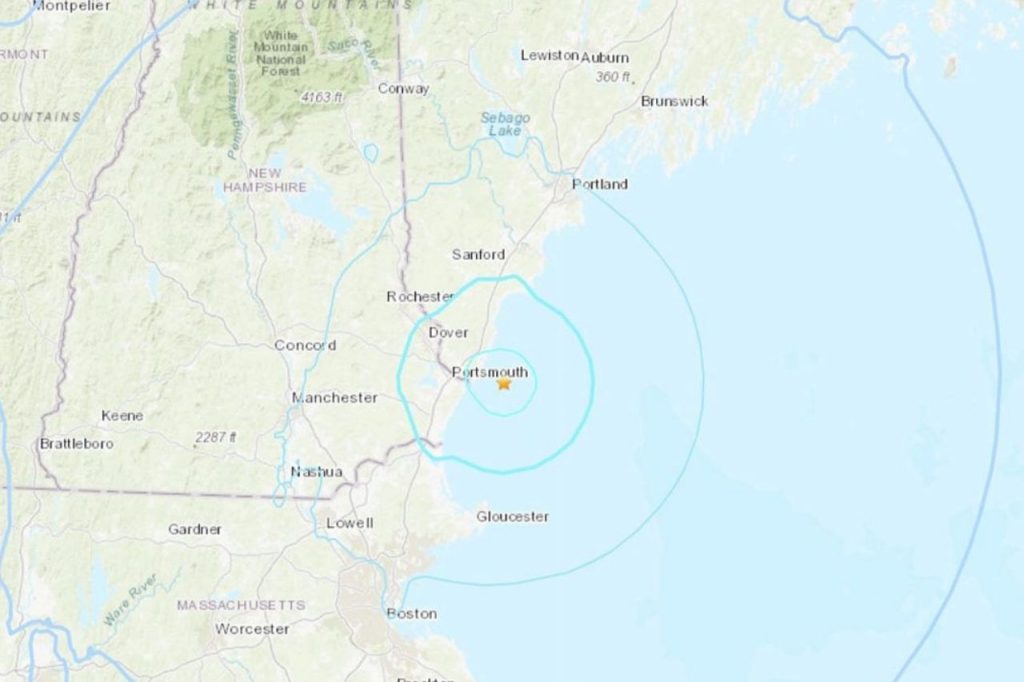By: Pierre A. Louis, Esq., Managing Attorney at Louis Law Group, principal office in Miami, Florida
1. Introduction
On January 27, 2025, an earthquake shook parts of New England, with tremors reportedly felt from Boston, Massachusetts, to Portland, Maine. According to preliminary reports, the earthquake was moderate but sufficient to cause concern among homeowners who woke up to a jolt. Early videos and eyewitness accounts indicate some minor structural cracks in certain older buildings, though widespread severe damage, fortunately, appears minimal. A local news report (see WCVB coverage) chronicled citizen reactions, highlighting how relatively rare significant seismic events are in that region.
Though the epicenter of this event lies far from Florida, the quake highlights a perennial concern among homeowners everywhere: Does your homeowner’s insurance policy cover damage caused by “earthquakes,” “earth movement,” or man-made events such as “blasting”? In Florida—particularly in areas like Miramar, where blasting at construction and rock quarries can cause tremors—understanding how different insurance policies define and treat “earth movement” becomes essential.
This article examines these issues from a Florida homeowner’s perspective but also provides a general overview useful to homeowners in other states. We will discuss how insurance policies typically handle earthquake and earth-movement-related claims, the legal distinction often drawn between man-made and natural events, the precedent set by Florida courts (including Fayad v. Clarendon Nat’l Ins. Co. and Tower Hill Prime Insurance Company v. Bermudez), and why policyholders must read their policies carefully. Ultimately, if you believe you have suffered damage from seismic activity (natural or otherwise), contact a qualified insurance attorney or seek professional counsel to navigate your specific coverage questions.
2. Earthquake and Earth Movement: An Overview

A standard homeowner’s insurance policy, often referred to as an HO-3 “all-risk” policy (for the dwelling), covers direct physical loss to property unless expressly excluded. Earthquakes, sinkholes, and other forms of earth movement (including landslides) are frequently either excluded outright or covered under special endorsements. While the New England earthquake might have minimal impact on Florida residences directly, it provides an apt case study for understanding these distinctions.
Most homeowner’s policies contain language similar to the following (often presented in Section I – Exclusions):
- Exclusions for certain types of earth movement:
- Earthquake, including land shock waves or tremors (before, during, or after a volcanic eruption)
- Landslide
- Mine subsidence
- Mudflow
- Earth sinking, rising, or shifting
- Exclusions for additional perils:
- Flooding, power failure, neglect, war, and nuclear hazards
- Intentional losses or faulty design
- Wear and tear, deterioration, or settling
- Policy definitions and separate endorsements:
- Earthquake coverage, if desired, often requires a specific endorsement
- Water damage (like floods) may require National Flood Insurance Program (NFIP) coverage
A crucial point for policyholders is that “earth movement” exclusions often apply “regardless of any other cause,” suggesting that if the earth movement is part of the chain of events leading to damage, the default position is no coverage. However, real-world disputes arise when “man-made” or “artificial” causes trigger the earth movement, such as blasting, fracking, or construction projects near one’s home.
3. The Distinction Between Natural and Man-Made Earth Movement

3.1 Why This Distinction Matters
Homeowners often do not realize that “earth movement,” as used in a policy, typically references natural phenomena. Insurers argue that “earth movement” includes both natural (e.g., earthquakes) and man-made (e.g., blasting or drilling) events when the policy language uses broad phrases such as “earth shifting,” “earth sinking,” or “earth rising.” Courts, however, have frequently approached these exclusions with a critical eye, especially when the policy does not explicitly specify that both natural and man-made causes are excluded.
In Florida, Fayad v. Clarendon National Insurance Co. (899 So.2d 1082) became a leading decision, clarifying that certain “earth movement” exclusions apply only to natural events unless the policy includes language clearly encompassing man-made causes. In Fayad, homeowners alleged blasting from a nearby construction project caused cracks in their house. Clarendon, the insurer, denied coverage, citing its earth movement exclusion. The Florida Supreme Court disagreed, concluding that under Clarendon’s specific language, the exclusion was limited to naturally occurring events such as earthquakes, landslides, and mudflows—not man-made blasting vibrations.
3.2 The Florida Supreme Court’s Analysis in Fayad
- Policy Language: Clarendon’s policy excluded damage due to “earth movement,” defined as “earthquake, including land shock waves, landslide, mine subsidence, mudflow, earth sinking, rising, or shifting.”
- The Legal Issue: Did the phrase “earth sinking, rising, or shifting” include damage from blasting?
- Court’s Holding: Because the listed perils (e.g., earthquakes and landslides) were natural phenomena, the general phrase “earth sinking, rising or shifting” was interpreted to refer only to similar natural events. Clarendon’s policy did not clearly state that man-made earth movement was excluded. Therefore, blasting-induced vibrations were covered.
This decision heavily influences how Florida courts handle “man-made vs. natural” disputes over earth movement coverage. While Fayad addressed a specific policy’s wording, many policies continue to follow that basic format, leading to similar outcomes unless the insurer’s policy “explicitly” excludes man-made causes.
4. The Importance of Policy Language

Not all policies read the same. Some insurers have introduced more robust language—often called “anti-concurrent cause” (ACC) provisions—stating that damage from earth movement is excluded “regardless of whether the earth movement is caused by natural or man-made forces.” Under such a provision, an insurer tries to avoid coverage even if the earth movement resulted wholly or partially from blasting. Florida courts generally uphold these ACC provisions if they are written clearly and unambiguously.
For example, a policy might say:
“Earth movement” means any earth movement, whether caused by natural or artificial forces, including but not limited to earthquake, volcanic eruption, explosion, or blasting vibrations, and this exclusion applies regardless of any other event or cause contributing concurrently or in any sequence to the loss.”
Such expanded language can override the Fayad-style analysis and exclude blasting damage. However, absent that explicit language, Fayad remains instructive in finding coverage for man-made blasting vibrations, because standard earth movement exclusions typically reference only natural phenomena (e.g., earthquakes, landslides).
5. Recent Earth Movement Disputes in Florida: Tower Hill v. Bermudez
A notable appellate case that highlights man-made vs. natural earth movement distinctions is Tower Hill Prime Insurance Co. v. Bermudez (388 So.3d 165, Fla. 3d DCA 2023). The policyholders in Bermudez alleged damage caused by blasting vibrations from a nearby rock quarry, not from soil movement. Tower Hill denied coverage, arguing that any movement of the house’s foundation or cracks in the walls was excluded under the policy’s earth movement provisions.
5.1 Jury Trial and “Battle of the Experts”
- Competing Testimony: Tower Hill’s expert contended that the true cause was “soil movement” (also known as “earth movement”) set in motion by the blasting. The insured’s expert, however, testified that the vibrations were transmitted directly through the air or ground, shaking the house.
- Verdict: The jury found that Tower Hill failed to prove the damage was excluded under its policy. The crux was whether the damage was from “earth movement” (excluded) or the direct shock waves (covered).
- Concurrent Causation Doctrine: The court also discussed whether a covered peril (shock waves from blasting) combined with an excluded peril (earth settling) to cause damage. Since the policy’s anti-concurrent cause language did not apply to that portion of the coverage, the insured prevailed if blasting was one concurrent cause of the damage.
With Tower Hill v. Bermudez, Florida’s Third District Court of Appeal reaffirmed Fayad’s principle: absent explicit anti-concurrent cause provisions that mention man-made earth movement (like blasting), standard homeowner’s policies often do not exclude coverage for vibration or shock wave damage.
6. Florida Homeowners and Blasting in Miramar

This analysis is especially relevant in places like Miramar, Florida, where quarry blasting to extract limestone can send vibrations through neighborhoods. Homeowners in Miramar, Weston, and other parts of southwest Broward County have long complained about property cracks and structural damage attributed to these controlled explosions.
- Local Context: Mining operations in Miramar use explosives to break up rock. Residents feel the tremors, sometimes describing them similarly to earthquake shocks.
- Insurance Claims: When cracks appear, insurers often investigate if earth or soil settlement caused the damage, or if blasting vibrations directly shook the structure. As detailed in Bermudez, the final determination may hinge on policy language and expert testimony.
6.1 Practical Advice for Miramar Homeowners
- Document the Damage: Take photos and videos of new cracks or structural issues, and note the date and time of any perceived tremor.
- Monitor Blast Schedules: Many quarries post blasting times or provide notice. Keep records if you feel the quake-like shock around the known blasting schedule.
- Check Your Policy: Look carefully at the exact wording in the “exclusions” and definitions sections. Does it specifically mention “blasting” or “man-made earth movement”? Does it have an “anti-concurrent cause” clause?
- Promptly Report Claims: If you suspect blasting damage, file a claim with your insurer promptly. Delayed reporting can complicate coverage.
- Seek Professional Assessment: Consider hiring an independent engineer or contractor who can identify whether cracks seem consistent with settlement or blasting vibrations.
7. Coverage Disputes: Key Legal and Practical Considerations
7.1 The Concurrent Cause Doctrine
Florida recognizes the “concurrent cause” or “efficient proximate cause” doctrine, which says if multiple causes combine to produce a loss—some covered, some excluded—the policy covers the loss if at least one independent covered cause is a substantial factor. However, anti-concurrent-cause clauses can override this rule by excluding coverage if an excluded peril “concurrently or sequentially” contributed to the loss.
- Example: If your Miramar home suffers damage partly from normal settling (excluded) and partly from blasting vibrations (covered), you may still recover if the policy does not have an effective anti-concurrent cause clause. If, however, your policy excludes coverage for earth movement “regardless of cause or event contributing concurrently,” the insurer may rely on that language to deny coverage.
7.2 Policy Endorsements for Earthquakes
While Florida is less prone to large earthquakes than other areas, the news of an earthquake in New England underscores the unpredictability of seismic events. If you are in a region susceptible to earthquakes or tremors—even small ones—you should consider purchasing a separate earthquake endorsement or a standalone policy. Standard homeowner’s insurance typically does not cover earthquake-related damage unless you have that additional endorsement.
- Deductibles: Earthquake coverage often comes with a percentage-based deductible tied to the dwelling limit, which can be significantly higher than a typical flat deductible.
7.3 Other Exclusions to Note
In addition to earth movement, standard homeowner’s policies frequently exclude:
- Flooding: Separate NFIP policy typically required.
- Water Seepage: Long-term seepage or infiltration often falls under “neglect” or “maintenance” issues.
- Wear and Tear: Gradual deterioration is not covered.
- Faulty or Defective Design: If poor construction practices contribute to the damage, coverage may be limited or excluded.
An insurer might argue, for instance, that the cracks you see are a result of normal wear and tear or settling. It becomes pivotal to distinguish the “normal” settlement from damage caused by an explosive shock wave, especially in southwestern Broward County communities.
9. Practical Tips for Homeowners
- Read Your Policy Carefully
The best time to understand exclusions is before a loss occurs. If you have concerns about blasting, construction, or potential earthquakes, ask your agent or attorney to clarify coverage. - Endorsements and Riders
If you live in an area where blasting occurs regularly or if you want peace of mind for earthquakes, consider adding endorsements specifically covering these events. - Maintain Your Property
Deterioration, wear and tear, or neglected maintenance can provide insurers with reasons to deny or reduce claims. Keep good records of inspections and repairs. - Document Any Events
Whether it’s an actual earthquake or blasting vibration, note the date, time, and severity of what you experienced. If possible, coordinate with neighbors who may also have claims or relevant observations. - Consult Professionals
- Legal: If a claim is denied, consult an experienced property insurance attorney. Florida law can be nuanced, and your policy’s specific wording matters.
- Engineering/Construction: Expert opinions may help establish whether structural damage was sudden and consistent with vibrations (e.g., blasting) rather than long-term settling.
- Be Cautious With Pre-Existing Damage
Insurers often deny claims by asserting the damage is old or the result of normal settling. If your property does have old cracks or known issues, keep a log and up-to-date records so that new damage is distinguishable.
10. The Role of Court Decisions in Shaping Coverage
Two major Florida cases have shaped how courts analyze blasting-related claims:
Fayad v. Clarendon National Insurance Co. (899 So.2d 1082) – The Florida Supreme Court case that definitively ruled man-made blasting was not excluded under a typical earth movement exclusion.
More recently, the Third District Court of Appeal reaffirmed these principles in Tower Hill Prime Insurance Co. v. Bermudez (388 So.3d 165), illustrating that if insurers want to exclude man-made earth movement from coverage, they must state so unambiguously—often via a broad, “anti-concurrent cause” provision that mentions blasting by name.
Given how important these cases are, whenever you have a loss involving cracks or structural compromise purportedly caused by vibrations, it is wise to review your policy’s exact wording and consult an attorney familiar with property insurance litigation. The slightest difference in language can mean the difference between a successful claim and a denied claim.
12. Frequently Asked Questions
Q1: If my house in Miramar experiences cracks but no local blasting is reported, can I still claim coverage for possible seismic activity?
A: Florida experiences few natural earthquakes. If no blasting is involved, the insurer may argue it’s normal settling or wear and tear, both typically excluded. An earthquake endorsement is usually necessary to cover true seismic losses. However, each claim is unique; consult an expert if you suspect unusual ground activity.
Q2: Why doesn’t standard homeowners insurance automatically cover earthquakes?
A: Earthquake risks differ geographically, and losses can be catastrophic. Insurance companies often separate such risks to manage exposures. Homeowners in high-risk seismic areas typically purchase supplemental endorsements or standalone earthquake policies.
Q3: I heard blasting from across town, but the insurer denies any link to my property damage. How can I prove it was the blast?
A: Gather as much evidence as possible: times, dates, affidavits from neighbors who felt vibrations, photos of new cracks, and possibly a professional engineer’s report stating the damage is consistent with blast shock waves. Competing expert testimonies often decide these disputes in court or arbitration.
13. Why You Should Seek Legal Counsel
Insurance coverage issues, especially those involving “earth movement,” can be complex. The outcome often hinges on your policy’s precise language. If you are uncertain about your rights after an earthquake or suspected blasting event, consulting with an insurance attorney could be the difference between a successful claim and a denied one.
Key reasons to consult an attorney:
- Policy Interpretation: Insurance policies can be dense. An attorney can interpret exclusions and endorsements to see if coverage applies.
- Case Law Updates: Attorneys track relevant state and federal decisions (like Fayad and Bermudez) that may influence your claim.
- Negotiation & Litigation: Insurers often have large legal teams. A skilled attorney can negotiate effectively or litigate on your behalf.
- Deadlines & Procedures: Insurance claims involve strict reporting deadlines. Missing them can forfeit coverage. Attorneys help ensure timely compliance.
14. Conclusion
The unexpected earthquake in New England on January 27, 2025, serves as a reminder that seismic events, whether natural or man-made, can lead to significant damage to residential properties. If you own a home in Florida—particularly in areas like Miramar where construction or quarry blasting is common—it is crucial to understand how your homeowner’s insurance policy addresses “earth movement” and how Florida case law can affect your coverage.
- Natural Earth Movement: Typically excluded unless you carry an earthquake endorsement.
- Man-Made Blasting: Often covered under a standard all-risk policy unless the insurer clearly and explicitly excludes it.
- Concurrent Causes: If multiple factors cause the damage (e.g., normal settling plus blasting vibrations), coverage may exist unless you have a robust anti-concurrent cause exclusion.
Ultimately, the question comes down to policy language, state law, and how courts interpret the facts of your particular claim. If you suspect your home was damaged by an earthquake, blasting, or any earth movement event, document everything and seek professional advice. Consulting with a qualified attorney is the best way to protect your rights, clarify your coverage, and ensure you navigate the claims process successfully.
About the Author
My name is Pierre A. Louis, Esq. I am the Managing Attorney at Louis Law Group, headquartered in Miami, Florida. Our firm regularly assists homeowners in insurance disputes, including claims involving blasting, sinkholes, hurricanes, water damage, and other complex coverage questions. We believe in empowering policyholders with accurate information so they can make informed decisions. If you have any questions or concerns about a potential claim, please feel free to reach out.
Legal Disclaimer: This article is for informational purposes only and does not create an attorney-client relationship. Every policy and situation is unique, and legal outcomes can vary based on jurisdiction-specific precedents. For official legal advice concerning your policy, consult directly with a licensed attorney who can address your particular circumstances.


